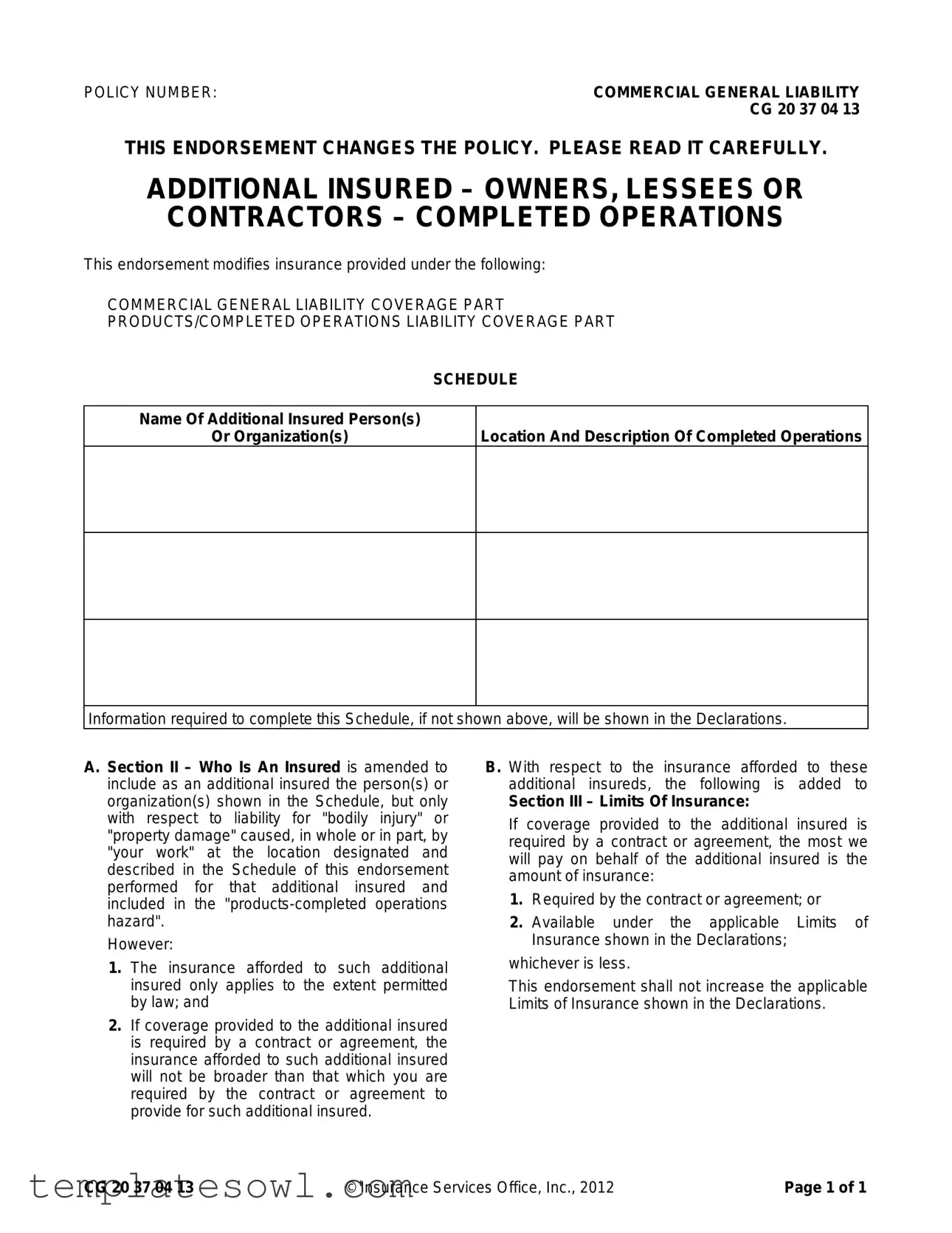What is the purpose of the CG 2037 form?
The CG 2037 form, also known as the Additional Insured – Owners, Lessees or Contractors – Completed Operations endorsement, modifies the terms of a Commercial General Liability (CGL) policy. Its primary purpose is to extend coverage to additional insured parties, such as owners or contractors, for liabilities arising from completed operations related to work done by the policyholder. This ensures that those additional insured parties are protected against claims for bodily injury or property damage that might occur as a result of the policyholder’s work.
Who qualifies as an additional insured under this form?
Any person or organization listed in the endorsement’s schedule qualifies as an additional insured. However, this coverage is limited to liabilities related specifically to "bodily injury" or "property damage" caused by the policyholder's work at the designated location mentioned within the schedule. It is important to ensure that the additional insured is named explicitly to benefit from the coverage.
How does the CG 2037 form affect insurance limits?
The insurance coverage provided to additional insureds under the CG 2037 form does not increase the overall policy limits. Rather, the coverage available is equal to the lower of the amount specified in any governing contract or agreement or the limits of insurance detailed in the declarations of the main policy. This means that additional insured parties must be informed of the limits applicable to their protection.
What conditions apply for coverage under the additional insured endorsement?
Coverage for additional insureds is contingent on two key conditions: first, the liability must arise from the policyholder’s work, and secondly, the endorsement will only apply to the extent permitted by law. If the contract or agreement necessitates broader coverage than what is provided by the policy, the coverage will revert to the limits established in the contract, preventing any expansion beyond agreed terms.
Are there any limitations to the coverage offered by the CG 2037 form?
Yes, the coverage provided can be limited in several ways. It only applies to claims related to completed operations at the specified location and described work. Additionally, if a contract requires less coverage than the policy affords, the insurance will conform to that lesser amount. Therefore, both the nature of the work and the contractual obligations significantly impact the extent of coverage.
What is meant by 'completed operations hazard' in this context?
Completed operations hazard refers to the potential risk of liability that arises after work has been completed. Under the CG 2037 form, this coverage protects additional insured parties from claims that occur after the work has concluded, which may involve issues such as defective workmanship or accidents related to the completed project. Understanding this term is essential for assessing risks associated with completed work.
How can companies ensure compliance with the CG 2037 form?
To ensure compliance, companies should carefully review their contractual obligations regarding insurance coverage requirements. Verifying that all necessary parties are named as additional insureds and that the terms of coverage align with what is stipulated in contracts is crucial. It is advisable to maintain open communication with insurance providers to clarify any uncertainties and ensure all endorsements are appropriately executed.

